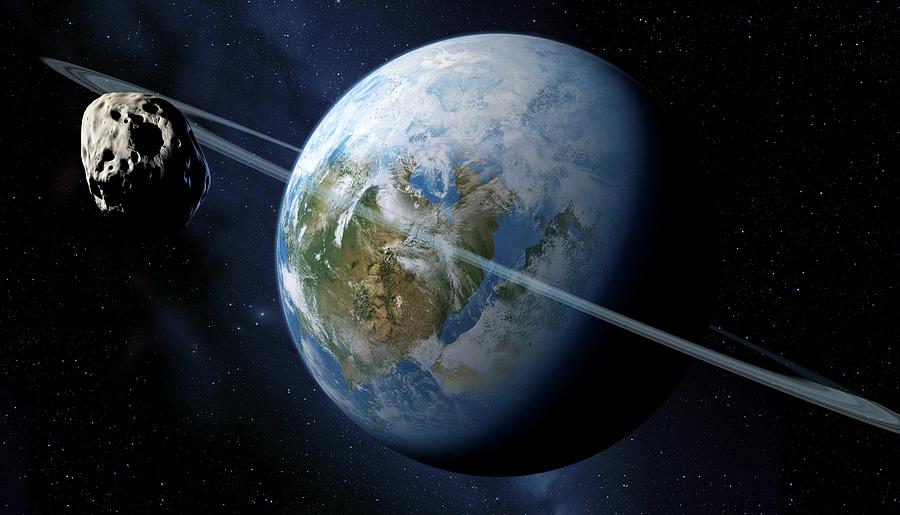an unusual challenge for alien astronauts?

Being a space faring species is hard work. Aside from battling budgetary problems and the difficulty of making reliable, resilient spacecraft that can escape the planet’s gravity, you have to deal with radiation, generating an immense amount of power to move your craft through the voids of deep space, and actually making it across the enormous distances separating celestial objects. Traveling beyond the planet where you evolved isn’t the kind of challenge you can expect to be met by all intelligent aliens. But for the sake of argument, let’s say that a newly developed, sapient species on a distant world rose to the challenge. Their appendages evolved in ways that allow them to assemble spaceships and they have a prototype ready to go. Before they do however, there may be a problem that adds another hurdle to their space exploration plans. Their planet may be ringed.
Recently, Phil Plait reviewed a video which showed what would happen if our world had a ring system like we see on Saturn and one of the implications of a ring system jumped out from the rest. With billions of rocks and ice particles in an orbit around the equator would make astronomy and spaceflight extremely difficult since the brightness of the sunlight they would reflect would blind telescopes and the rings themselves would create a huge hazard for rockets trying to hit escape velocity or climb into a high orbit…
Ground-based optical astronomy would be screwed pretty well. It’s hard enough to observe when the Moon is out; imagine a sky filled with rings! It would actually be difficult to see stars at all if you lived at latitudes where the rings ate up a goodly-sized piece of the sky.
The [rings] would be a major hazard to spaceflight; you really wouldn’t want to plow through them at several kilometers per second unless breathing vacuum is something you enjoy. Also, the rings would be located in the very worst possible place: right over the Earth’s equator [which is] the best place to put satellites, they’re easier to launch near the equator (you get a boost of 1600 kph from the Earth’s spin that way) and that’s where you want to put geosynchronous satellites for weather and communications. A lot of astronomical (and no doubt spy) satellites are in polar orbits, but again you wouldn’t want them plunging through the rings twice each orbit.
So imagine for a moment that our alien space explorers have to plow through rings or find a way to get around them. Since the rings would have to be within the Roche limit, an inhabited planet similar to Earth would offer a few tens of thousands of kilometers worth of clearance for spacecraft. While that leaves plenty of room for a small fleet of satellites and low orbit work, trying to travel to other planets would require some very pretty tricky maneuvering to clear the rings. Fail to do that and the spacecraft is blasted by countless particles or orbiting debris and reduced to scrap metal in just a few seconds. Following the bulge of the equator to spiral out into deep space would simply be out of the question.
Interestingly enough, physics is on the side of our hypothetical alien astronauts. Rocky rings around terrestrial planets are very unstable and would decay relatively quickly, on the order of millions of years. Considering the often glacial pace of evolution, the formation of the ring system and the appearance of an intelligent species able to conceive of space travel and design the technology to get to space would have to coincide very closely and the odds of that happening aren’t all that great. Not only would it be a problem brainy aliens could solve, it could actually be a pretty rare one based on what we know about how planetary rings form and decay. Still, the possibility that somewhere an alien flight center is plotting how to safely launch a deep space probe around a rocky ring circling the planet’s equator can be interesting to consider as well as the impact this arrangement would have on their space program and scientific research in general, provided they have research programs and scientific methodologies. But that’s a subject for a completely different post…





